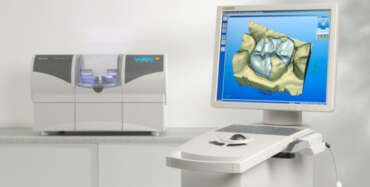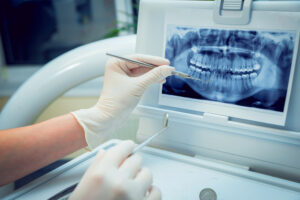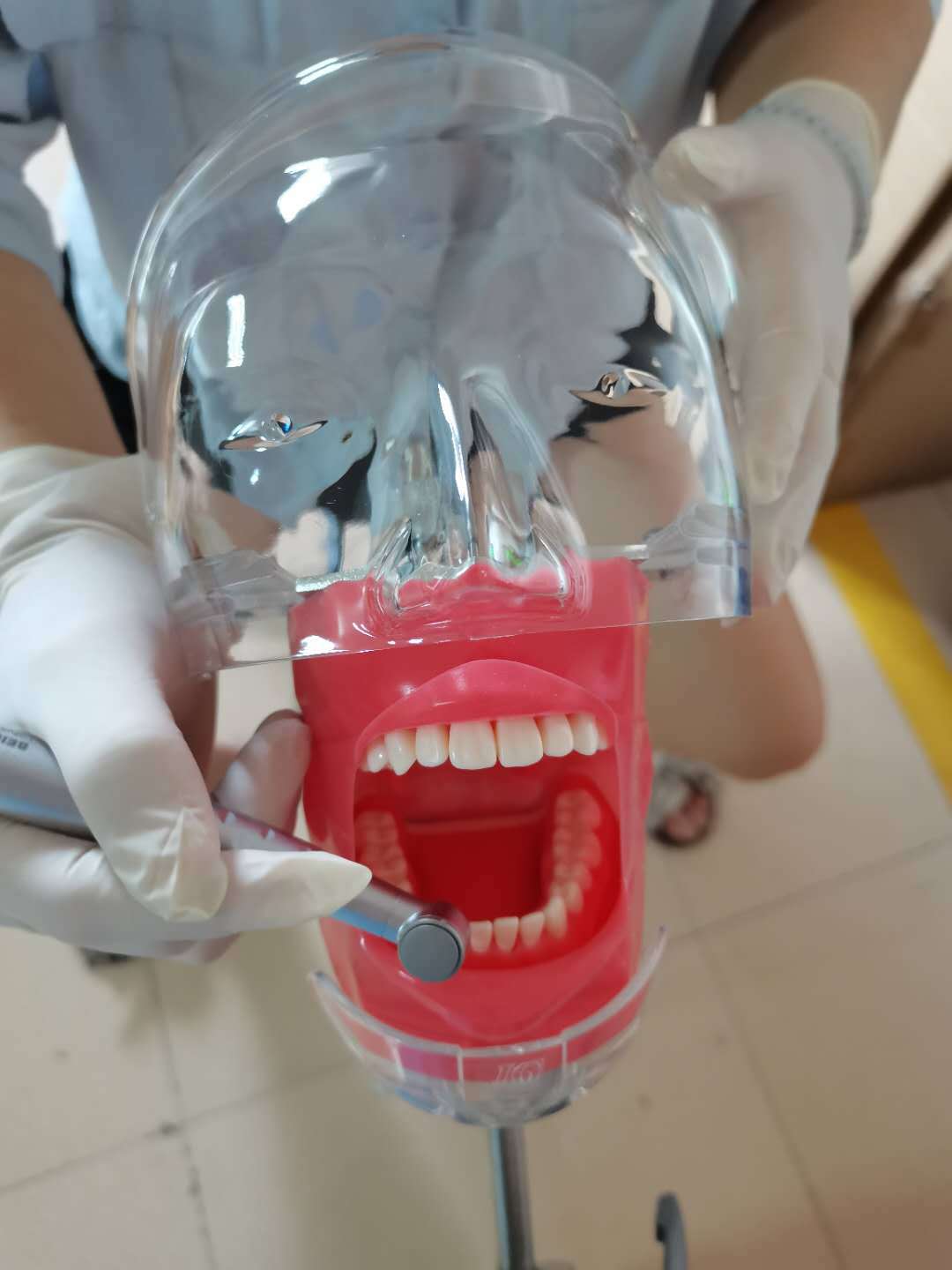Fully moving towards digitalization is a steady development trend of the oral processing industry in the world. 3D printing technology, as a manufacturing technology with significant digital features, has not only become a link in the oral digital processing chain, but also links oral diagnosis, design, and production processes through data streams to form a complete dental product processing. Digital process.
In the 3D printing technology displayed at IDS 2019 Cologne Dental Exhibition, we can see several development trends of 3D printing technology in the field of oral digital processing:
The application of 3D printing technology in the production of dental final products has increased, from the most common 3D printing metal crowns and removable denture brackets to the manufacturing of 3D printing implants. Photopolymerization 3D printing technology has expanded from indirect applications such as manufacturing dental molds, casting models, and surgical aids to applications in the production of final oral products. This is mainly due to the development of new oral 3D printing materials.
Well-known stomatological companies from the initial stage of testing the waters of 3D printing to enter the stage of strength, they continue to invest in 3D printing technology, and launch new materials and new equipment;
The 3D printing speed is further improved.
“3D printing technology is the “all-round player” in digital dental processing. It is almost inevitable for advanced dental processing companies to realize the digitization of the whole process by using one or several 3D printing processes.-“3D Printing and Industrial Manufacturing “.”
Photopolymerization 3D printing technology for manufacturing final products
BEGO ceramic crown and inlay 3D printing technology
The latest technological highlight of BEGO is the VarseoSmile Crown, a 3D printing material used to manufacture long-term dental crowns. This is BEGO’s first 3D printing material for the manufacture of permanent single crowns and inlays. It is a ceramic filled hybrid material.
BEGO and its partner Nexa3D have launched the large-scale dental 3D printing equipment Varseo XL. BEGO said that compared with similar equipment, the printing area and printing speed of this equipment have been significantly improved. With these features, BEGO calls the system “the most productive and economical dental 3D printer”.
Varseo XL uses Nexa3D’s proprietary Lubricant Sublayer Light Curing (LSPc) and structured light matrix technology to manufacture 3D products at speeds up to 1 cm/min and 2700 ml/h. Varseo XL is compatible with BEGO’s full range of dental resin materials and is suitable for the manufacture of surgical guides, trays, permanent restorations, bridges, crowns, surgical guides and CAD/Cast.
Prior to this, Nexa3D launched the large-format SLA dental 3D printing equipment NXE400 3D printer. Both NXE400 and Varseo XL are designed for professionals in dental laboratories who hope to increase the productivity of dental laboratories by 30 times. Thanks to the cooperation between BEGO and Nexa3D, BEGO will commercialize Varseo XL in the next 12 months through its growing network of dental distributors.
Formlabs digital denture materials
Today, 50 million dentures are produced globally every year, but only 1% are produced using digital tools. Traditional denture manufacturing is a complicated manual technique, and the dental technicians have a long cycle of training skilled technicians to master this technique.
Formlabs has launched the digital solution Formlabs Digital Dentures for this application, hoping to expand the production of dentures with efficient and economical 3D printed denture solutions. According to calculations by Formlabs, the material cost of 3D printed full dentures is about US$10 per piece, while the cost of using traditional denture cards and acrylic is US$50.
Formlabs
Formlabs’ digital denture solution includes two class II medical 3D printing materials, one is denture base resin and the other is denture resin. These materials have long-term biocompatibility and can be used for 3D printing of complete dentures.
In addition to the economic advantages, the most significant difference between the digital denture solution and the traditional denture manufacturing process is that it reduces the dependence on manual experience and obtains accurate, consistent, and high-quality results through digital technology.
Carbon cooperates with dental companies to develop new materials
Dental product manufacturer Keystone Industries and 3D printing unicorn company Carbon have collaborated to optimize KeySplint Soft™ 3D printing resin that Keystone is applying for a patent. The material can be used for night protection and direct manufacturing of bite splints.
KeySplint Soft™ is expected to be the first FDA-510k certified 3D printing resin for night protection and direct manufacturing of bite splints. KeySplint Soft™ combines the strength and toughness required to protect teeth, increasing the flexibility of customization of such products, and has both a transparent and beautiful appearance while ensuring patient comfort. According to Carbon, the splints 3D printed with this material are not fragile, wear-resistant, stain-resistant, polishable and easy for patients to clean. The material has a two-year shelf life and long-term color stability.
In addition to this 3D printing resin material for production, Carbon also has a resin material Dentsply Premium for denture manufacturing.
Under the trend of digitization of dental processing, it is particularly important to link dental 3D printing equipment with digital scanning equipment and design systems in dental clinics and laboratories to create an automated workflow. Carbon recently upgraded its software to optimize automated workflows and achieve traceability of dental product processing. Carbon’s workflow is compatible with CAD/CAM systems commonly used by dental clinics and mechanics, such as 3Shape, exocad and AvaDent.
Dental implant processing technology combining the advantages of 3D printing and milling
Austrian dental implantologist Dr. Mario Kern has developed a patented process for creating metal 3D printed dental implant abutments-the Extended Anatomical Platform (EAP) process.
The implant abutment processing method involved in this process is GE Additive’s dental hybrid technology, which combines metal 3D printing and CNC milling, and combines the advantages of additive manufacturing and milling technology to maximize the use of both Manufacturing Technology.
According to Dr. Kern, more and more patients choose dental implants for oral restoration, but this has led to an increase in peri-implant inflammation. This is a contagious oral disease that will inflame the gums and bone structure around the implant, causing the tissue around the implant to shrink, and eventually the metal abutment will be exposed.
To solve this problem, dental technicians use ceramic abutments to cover the exposed metal, but this is not a permanent solution because ceramics can easily become loose. Therefore, the EAP process was created to produce a more biocompatible abutment with natural beauty.
Dr. Kern uses a selective laser melting 3D printing device to manufacture the abutment, which has a narrow-walled structure. Then use 5-axis milling equipment to further process the abutment. The 3D printed titanium alloy edge is also included on the abutment designed through the EAP process. This structure is modifiable and eliminates the need to connect to the implant through an adhesive base.
The surface of the metal 3D printed abutment is easier for cells to attach. Dr. Kern said that a smooth surface makes it difficult for cells to attach, and a rough surface is prone to bacteria. The abutment designed and manufactured by the EAP process has a surface roughness of 0.2μm, which is an ideal roughness for cell growth.
In addition, Dr. Kern concluded in the EAP process research and development that the metal 3D printed abutment has better metallurgical properties than the casting made of the same material. The final product density of the abutment made of EAP is 99.6%. .
Traditional dental companies deepening 3D printing solutions
If two years ago, the 3D printing technology shown to the market by famous veteran dental product manufacturers such as BEGO and Planmeca was only a kind of market “testing the waters” behavior, then 3D Science Valley believes that today, two years later , These dental giants have entered the stage of exerting power from the “testing” period of 3D printing technology.
3D Science Valley saw that BEGO has enriched the products in the 3D printing “family”, and the application of equipment is more comprehensive, including metal 3D printing equipment and a variety of light-curing 3D printing systems and materials for different applications. The application of these technologies has penetrated into the fields of oral restoration, orthodontic product design and final product manufacturing. BEGO’s 3D printing technology presents a trend of “3D” the manufacturing of these oral products.
Planmeca chairside 3D printing system
Dental equipment manufacturer Planmeca has increased the speed of 3D printing equipment and launched a new 3D printing equipment, Planmeca Creo™ C5, which is positioned as a digital processing technology for dental clinics by the dental clinic. This equipment has a high level of automation. According to Planmeca, the equipment’s pre-programmed and optimized material parameters and automatic nesting function will ensure that predictable and high-quality 3D printing results can be obtained every time. Since no manual setup or calibration is required, printing is as easy as pressing a button. Planmeca hopes that this 3D printing technology can become a game changer in the industry.
Of course, as an established supplier of comprehensive dental products with oral imaging equipment, design software and processing equipment, Planmeca’s most competitive advantage is not in launching 3D printing equipment, but in being able to use its 3D printing technology as a digital A link of processing is integrated into the complete oral digital process from oral diagnosis to oral product design and processing.
CAD CAM Dental milling burs series in list:
- Planmeca Dental Milling Tools
https://www.dentallabshop.com/product/planmeca-dental-milling-tools/
- Vhf Dental Cad Cam Milling Burs For Zirconia
https://www.dentallaboratorio.com/product/vhf-dental-cad-cam-milling-bur/
- Sirona Mcx5 Dental Zirconia Burs
https://www.dentallaboratorio.com/product/sirona-mcx5-dental-zirconia-burs/
- Imes Icore Burs-6mm Shank
https://www.dentallaboratorio.com/product/imes-icore-burs-6mm-shank/
- Dental Zirkon Zahn Burs-6mm Shank
https://www.dentallaboratorio.com/product/dental-zirkon-zahn-burs/




